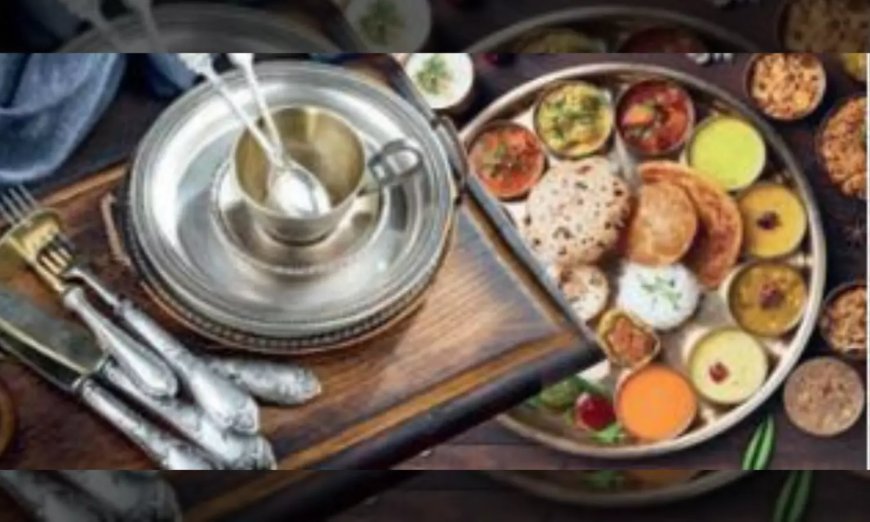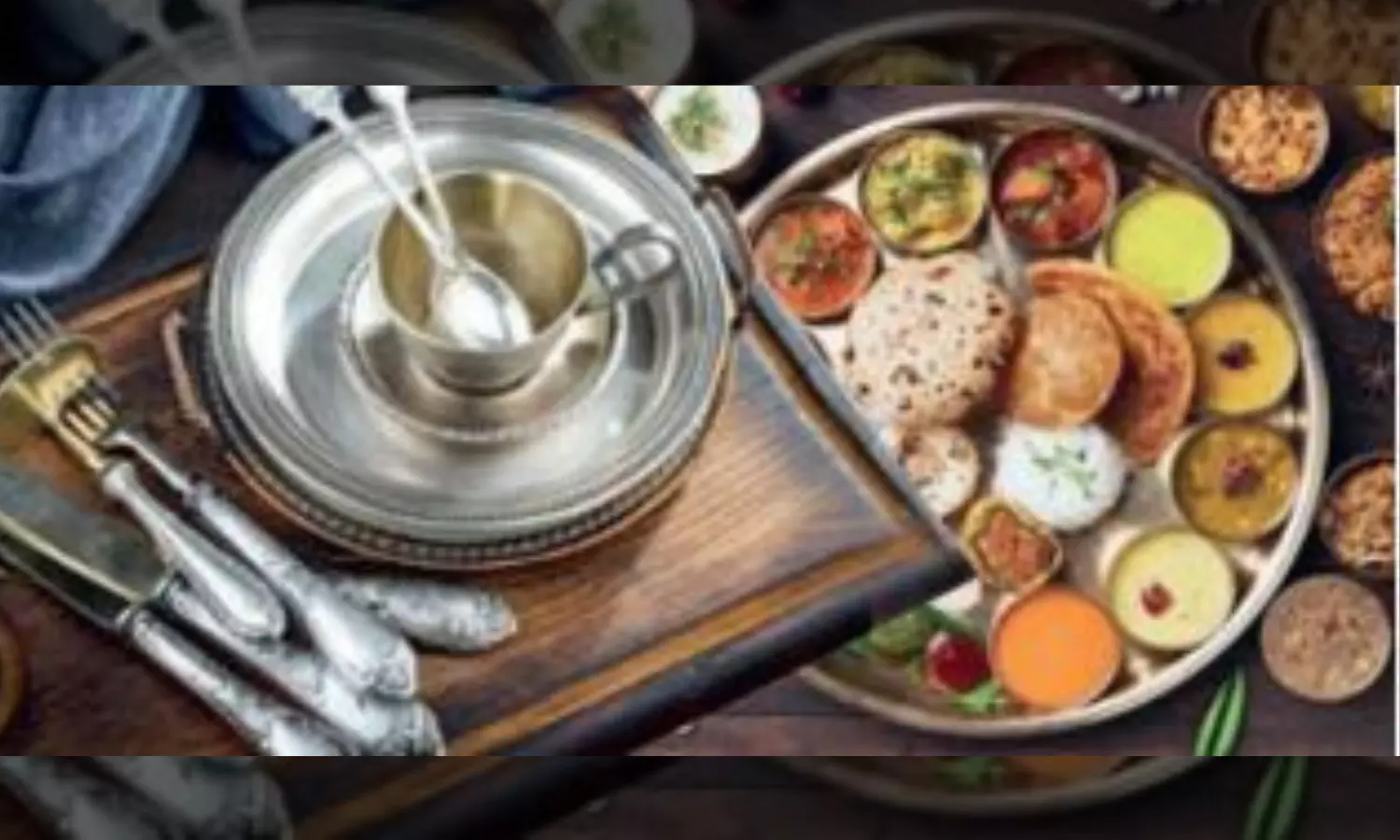Precious metal meal: When novelty meets royalty
Eating food from silverware or gold utensils like aristocrats is now becoming a thing in many nouveau riche households for good health and a fine dining experience


The art of serving delectable warm meals in silverware or gold utensils is not just a thing of the past restricted to royal households, many nouveau riche folks are eating their meals on plates and cutlery made from precious metals. For some, it is a matter of class and sophistication, for a few others it is old traditional values and the health properties associated with precious metals.
“Eating food served on silver, bronze, or gold utensils may seem like an antiquated luxury reserved for royal banquets, but the benefits of using these meals are surprisingly compelling,” says Chef Meghna Kamdar from Meghna’s Food Magic. Meghna opines that these precious materials are not merely for decorative purposes but they boast a host of health benefits.
PRECIOUS MORSELS
Amalgamating various elements of hospitality, class, and grandeur in one simple serving is no less than a warm and kind gesture of gratitude to those being served the meal. Speaking specifically about the many antibacterial properties of Silver, Chef Meghna says, “Eating from silver utensils apart from luxury and style also helps reduce the risk of infections as the metal actively inhibits the growth of harmful bacteria.”
Gold is another wise pick since historical times. She says, “Gold being non-reactive and hypoallergenic makes an excellent choice for those with sensitivities,” adding, “Besides, who wouldn’t enjoy the touch of luxury?”
STRONG CULTURAL HOLD
Precious metals like gold, silver, and bronze have always held a special place in India’s culinary traditions since ancient times. These metals are known for their grandeur, health benefits, and cultural significance.
Neha Deepak Shah, Chef & Content Creator says that Silver usually is known for its role in aiding digestion and boosting immunity. Bronze is considered an ideal choice for enhancing nutrient absorption making them suitable for warm, cooked meals. Chef Neha adds, “Gold while rarely used for eating today, is often seen as a symbol of opulence and is thought to have subtle health benefits such as improving vitality and the energy flow in the body.”
These practices were widely followed by the royal families, but many use silverware and golden spoons as decorative items today. However, there has been a resurgence in the use of silverware and other precious metals in super-rich households.
Chef Neha also points out that such practices of using precious metals are predominant in India due to its deep-rooted cultural and Ayurvedic traditions. She says that globally eating precious metal utensils like silver or gold is a rarity and may only be linked to luxury rather than health. This isn’t the same when it comes to India. She adds, “In India, the focus on holistic wellness and its strong connection to heritage makes this tradition a prominent one that individuals cling unto.”
Neha opines that such a practice exists but is less common in daily use.
“You might find silver thalis or bowls in traditional households during festivals, weddings, or rituals today but the reasons for their overall decline also include modern lifestyle habits, convenience issues, and the high cost of such utensils” adds Neha.
These practices are commonly spotted even today in regions with a strong cultural adherence to traditions.
PRICELESS MEALS
Utensils made of silver and gold would cost one a hefty sum and may not always be purchased in bulk. However, many families who can afford and have a deeply-rooted significance attached to these practices opt for it.
Omkar Pawar, Food & Lifestyle Content Creator opines that in many cultural practices, using silver or gold utensils isn’t just about health. Such a practice adds an added layer of respect to the food one eats. Omkar says, “It’s believed to preserve the taste and nutrients. And who wouldn’t want to eat food that’s not only good for the body but also feels extra fancy giving you those king or queen vibes?”
HEART OVER MONEY
Omkar believes that such practices help maintain heritage. He mentions that even families that aren’t super wealthy might still follow these traditions for cultural or spiritual reasons. So, it’s not always about the monetary factory. He says, “Sometimes it’s simply about keeping the family tradition vibrantly alive.”
The tradition of eating meals from silverware is not limited to royal households but has seeped in as a tradition in common homes as well. Many Indian households follow the practice of feeding children from silver bowls, plates, spoons, and glasses.
Omkar adds here, “Even if these gold plates were to be swapped for some other, more affordable variant, the essence of the practice is what matters.”
ELEGANCE & CARE
Silver may appear as a stronger and more durable metal as compared to gold. However, silver does tarnish over time and requires regular polishing to retain its lustre. The two may also be interchangeably used in many households that would prefer using silver for regular use and gold utensils for special occasions.
Stainless steel revolutionised eating habits and cutlery across the world, but there are many from the ‘upper crust’ who like to lay out their best silverware and gold goblets. So, if you are one of those gobs-macked guests at a precious metal meal party, the best dinner etiquette is to keep quiet and eat. Bon Appetit!






































